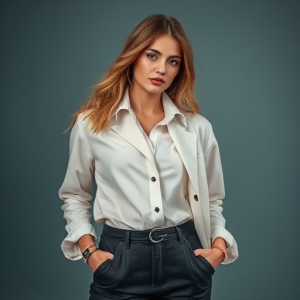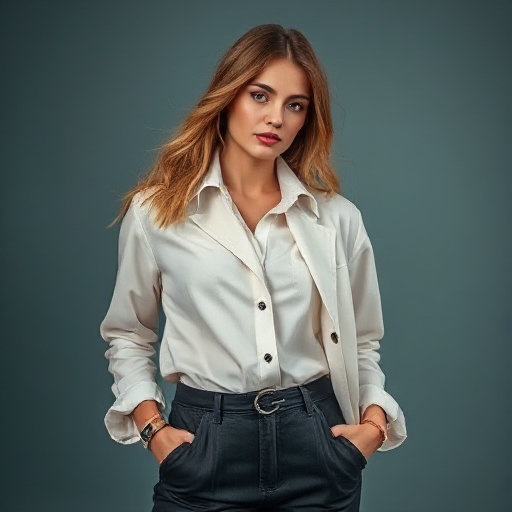
Fashion product photography is an essential aspect of promoting clothing, accessories, and other fashion items. Whether you’re running an online store, a fashion brand, or simply want to create high-quality imagery for social media, knowing how to capture your products in a visually appealing way can significantly impact sales and brand perception. In this article, we’ll explore essential tips for shooting fashion product photography that captures the attention of your audience.
1. Understand Your Brand and Audience
Before you even pick up your camera, it’s crucial to have a clear understanding of your brand and your target audience. Your photography should reflect the essence of your brand and appeal to the preferences and expectations of your customers. Is your fashion brand youthful and trendy, or classic and elegant? Your photos should communicate this vibe.
Pro Tip: Create a mood board or style guide that defines your brand’s aesthetic. This will help maintain consistency in your photos and guide your decisions when styling, lighting, and editing.
2. Choose the Right Equipment
To achieve professional results, having the right equipment is key. While you don’t need an expensive setup, investing in good tools can elevate your work. Here’s a rundown of essential gear for fashion product photography:
- Camera: A DSLR or mirrorless camera with at least 20-30 megapixels is recommended for sharp, high-quality images.
- Lens: A 50mm prime lens is popular for fashion photography due to its versatility, sharpness, and ability to create beautiful bokeh (background blur). A zoom lens (like 24-70mm) is also a good option for flexibility.
- Tripod: For stable shots, a tripod is essential, especially for flat lays and product-only shots.
- Lighting: Natural light can work wonders, but artificial lighting such as softboxes or ring lights can give you more control and consistency. A light source with adjustable color temperature (like LED lights) is ideal.
- Backdrop: A clean, uncluttered backdrop is essential for fashion product shots. White or neutral-colored backdrops are common, but colored or textured backdrops can add drama and style, depending on the brand’s aesthetic.
3. Focus on Lighting
Lighting can make or break your fashion photos. The goal is to highlight the product’s textures, colors, and details while avoiding harsh shadows or overexposed highlights.
- Natural Light: If you’re shooting indoors, set up near a large window to utilize soft, diffused sunlight. A cloudy day provides even lighting, while direct sunlight may create strong shadows (which can be used creatively but may need some diffusion).
- Artificial Lighting: If you’re shooting in low-light conditions or prefer more control, consider using softboxes, ring lights, or LED panels. Position your light source at a 45-degree angle to your product for the most flattering results.
- Lighting Modifiers: Using diffusers, reflectors, and flags can help control the intensity and direction of light, softening harsh shadows and ensuring the product is evenly lit.
Pro Tip: To create mood or emphasize textures, experiment with side or backlighting. This can create depth and enhance the fabric’s details.
4. Perfect Your Composition
A strong composition is fundamental in fashion photography. Whether you’re shooting close-ups of a dress or full-body shots of a model wearing a new collection, framing your shot effectively will highlight the product and create visual interest.
- Rule of Thirds: Place key elements (such as the product or model) along imaginary lines dividing the frame into thirds. This will create a balanced, dynamic image.
- Angles: Experiment with various angles to find the most flattering and eye-catching views of the product. Shooting from above can be great for flat lay shots, while lower angles can create a sense of power or elegance for models.
- Negative Space: Leaving space around the product or model helps to draw attention to the subject, making it the focal point of the image.
- Close-Ups: Don’t forget to capture the finer details such as stitching, patterns, and textures. Close-up shots give customers a better idea of the craftsmanship and quality of the product.
Pro Tip: Keep the background simple to avoid distractions, but don’t be afraid to introduce subtle textures or props that complement the product.
5. Styling Your Fashion Products
Effective styling is key to making your product look its best. Whether you’re working with clothing, accessories, or shoes, consider the following:
- Props: Props can enhance the aesthetic, but they should complement the product without overpowering it. For instance, a hat or sunglasses might look great with a jacket, or a well-placed handbag can highlight a dress.
- Wardrobe Choices: If you’re photographing a model, make sure the clothing is styled neatly and appropriately. A model’s posture and the way the fabric drapes can make a big difference in how the product is perceived.
- Textures and Layers: Combining different textures, like leather, wool, or silk, can create visual interest. Layering pieces or showcasing different angles of the product will add depth to your photos.
Pro Tip: For accessories like jewelry, bags, or shoes, consider using mannequins or display stands to give the product its own space without distraction.
6. Capture the Product from Different Angles
When photographing fashion items, it’s important to show the product from multiple angles to give customers a complete view. This is especially important for online stores, where customers can’t physically touch or try on the product.
- Full-Body Shots: When working with models, ensure you capture full-body shots that show how the product fits and moves.
- Detail Shots: Close-ups of the fabric texture, stitching, buttons, or other fine details help showcase the craftsmanship of the product.
- 360-Degree Shots: For online stores, consider offering a 360-degree view of the product so customers can interact with the image and see it from all angles.
Pro Tip: If you have a variety of products, maintain a consistent style by shooting each item from the same angles for a cohesive look.
7. Editing and Post-Processing
After capturing your images, it’s time to polish them through editing. Post-processing allows you to correct colors, adjust brightness, and sharpen details to make the product look its best. Here are a few key edits to make:
- White Balance: Ensure the colors in your images are accurate by adjusting the white balance. This helps prevent your images from looking too warm (yellowish) or too cool (blue).
- Exposure and Contrast: Adjust the exposure to ensure the product is properly lit, and tweak the contrast to add depth and highlight details.
- Remove Imperfections: Use the healing brush or clone tool in your editing software to remove any distractions or imperfections, like wrinkles in clothing or dust on accessories.
- Sharpening: Fine-tune the sharpness of your images to ensure that the textures and product details are clear and crisp.
Pro Tip: Don’t over-edit. While enhancing an image is important, maintaining a natural look that represents the product accurately will build trust with customers.
8. Consistency is Key
When shooting multiple products for your brand or store, consistency is crucial. Your images should have a similar style, tone, and mood to create a unified look across all your marketing materials. This consistency helps build brand recognition and strengthens your visual identity.
- Lighting: Stick to a consistent lighting setup to maintain a similar feel across your photos.
- Editing: Apply similar editing techniques across all your photos, including color grading, contrast, and saturation levels.
- Composition: Use the same framing and angles for similar types of products to create a cohesive visual style.
Fashion product photography requires a combination of creativity, technical skill, and an understanding of your brand’s identity. By focusing on high-quality equipment, mastering lighting techniques, carefully composing your shots, and editing your images thoughtfully, you can create visually appealing photos that showcase your products in the best light. Whether you’re photographing a model or shooting flat lays, these tips will help elevate your fashion photography and make your products stand out.
By implementing these strategies, you’ll be well on your way to capturing beautiful, professional photos that help engage your audience and increase sales. Happy shooting!
